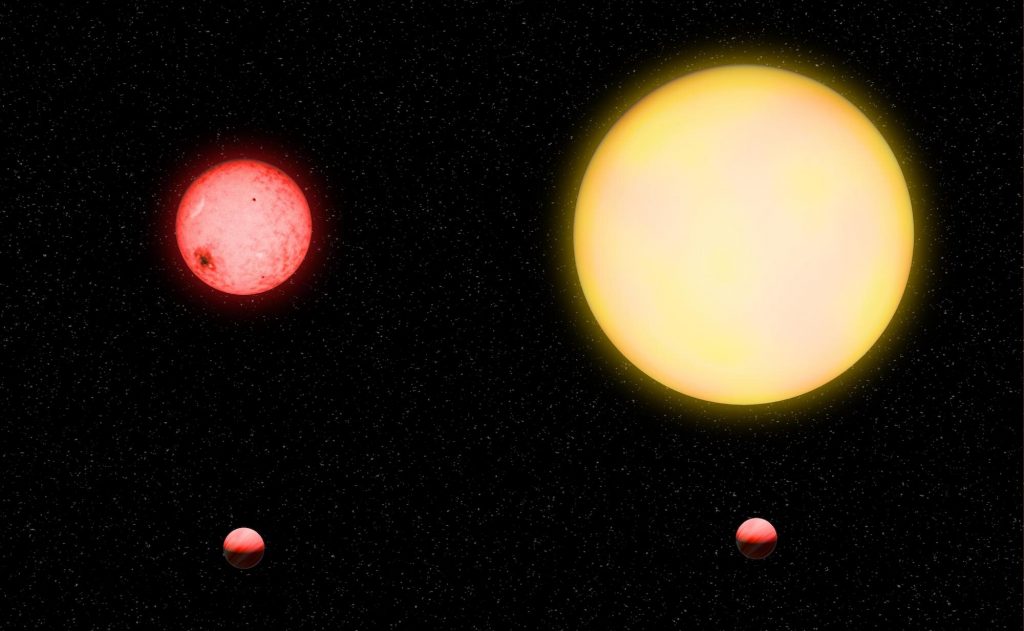A group of astronomers led by Shubham Kanodia from Carnegie University has discovered an unusual planetary
Newly discovered object TOI 5205b for the first timeidentified as a potential exoplanet candidate with the help of NASA's Transiting Exoplanet Survey Satellite (TESS). Now, astronomers have confirmed its planetary nature and characterized the object using various ground-based instruments and found something surprising.
 Artist's impression of a planet orbiting the small red dwarf star TOI-5205. Credit: Katherine Kane, Carnegie Institution for Science
Artist's impression of a planet orbiting the small red dwarf star TOI-5205. Credit: Katherine Kane, Carnegie Institution for Science
The host star TOI-5205 is approximately fourtimes larger than Jupiter. However, she somehow managed to form a planet the size of our gas giant. “This is quite surprising,” the scientists write and call it “impossible.”
Previously, scientists found several gas giants,orbiting more dwarf M-class stars. But until now, astronomers had not discovered systems in which a huge planet revolved around a very small star.
Our Jupiter revolving around the Sun can be compared to a pea revolving around a grapefruit. In the TOI-5205 system, a pea-sized planet orbits a lemon.
Shabham Kanodia, study author
 Comparison of the pair TOI 5205 and TOI 5205b, the Sun and TOI 5205b. Credit: Katherine Kane, Carnegie Institution of Science.
Comparison of the pair TOI 5205 and TOI 5205b, the Sun and TOI 5205b. Credit: Katherine Kane, Carnegie Institution of Science.
Additionally, when the Jupiter-mass TOI 5205b passes in front of its host star, it blocks about 7% of its light—one of the largest exoplanet transits known.
Read more:
Giraffe mating is even stranger than previously thought
Land in China drilled to a record depth
It's not about the Earth: scientists explained why the solar system is the rarest
Cover: Artist's impression of a planet orbiting the small red dwarf TOI-5205
Credit: Katherine Kane, Carnegie Institution of Science